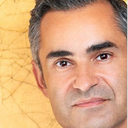Is it possible to fix a bulbous tip only with cephalic trimming and no suturing ?? because I noticed in every tip plasty suturing the cartilages makes the slim area above the lower lateral cartilages bulkier and I like my slim bridge I just have a problem of high lateral cartilages that Gives me the bulbous tip
Answers (7)
From board-certified doctors and trusted medical professionals
Dr. Behrooz Torkian, MD

Dr. Behrooz Torkian, MD
Board Certified Facial Plastic Surgeon
Answer
Dr. David R. Stephens, MD

Dr. David R. Stephens, MD
Board Certified Plastic Surgeon
Answer
Dr. Adam Bryce Weinfeld, MD

Dr. Adam Bryce Weinfeld, MD
Board Certified Plastic Surgeon
Answer
Dr. Howard Webster, MBBS (Hons), FRACS

Dr. Howard Webster, MBBS (Hons), FRACS
Specialist Plastic Surgeon
Answer
Dr. Edward Farrior, MD
Dr. Edward Farrior, MD
Board Certified Facial Plastic Surgeon
Answer
Dr. Richard W. Fleming, MD (retired)
Dr. Richard W. Fleming, MD (retired)
Board Certified Facial Plastic Surgeon
Answer
Dr. George J. Beraka, MD (retired)
Dr. George J. Beraka, MD (retired)
Board Certified Plastic Surgeon
Answer
More Rhinoplasty Questions
See all Rhinoplasty Q&AWE SEND PRETTY
EMAILS
What’s trending? Who’s turning heads? Which TikTok myths need busting? We’ve got you. No fluff, no gatekeeping—just real talk. Get our free, unfiltered newsletter.